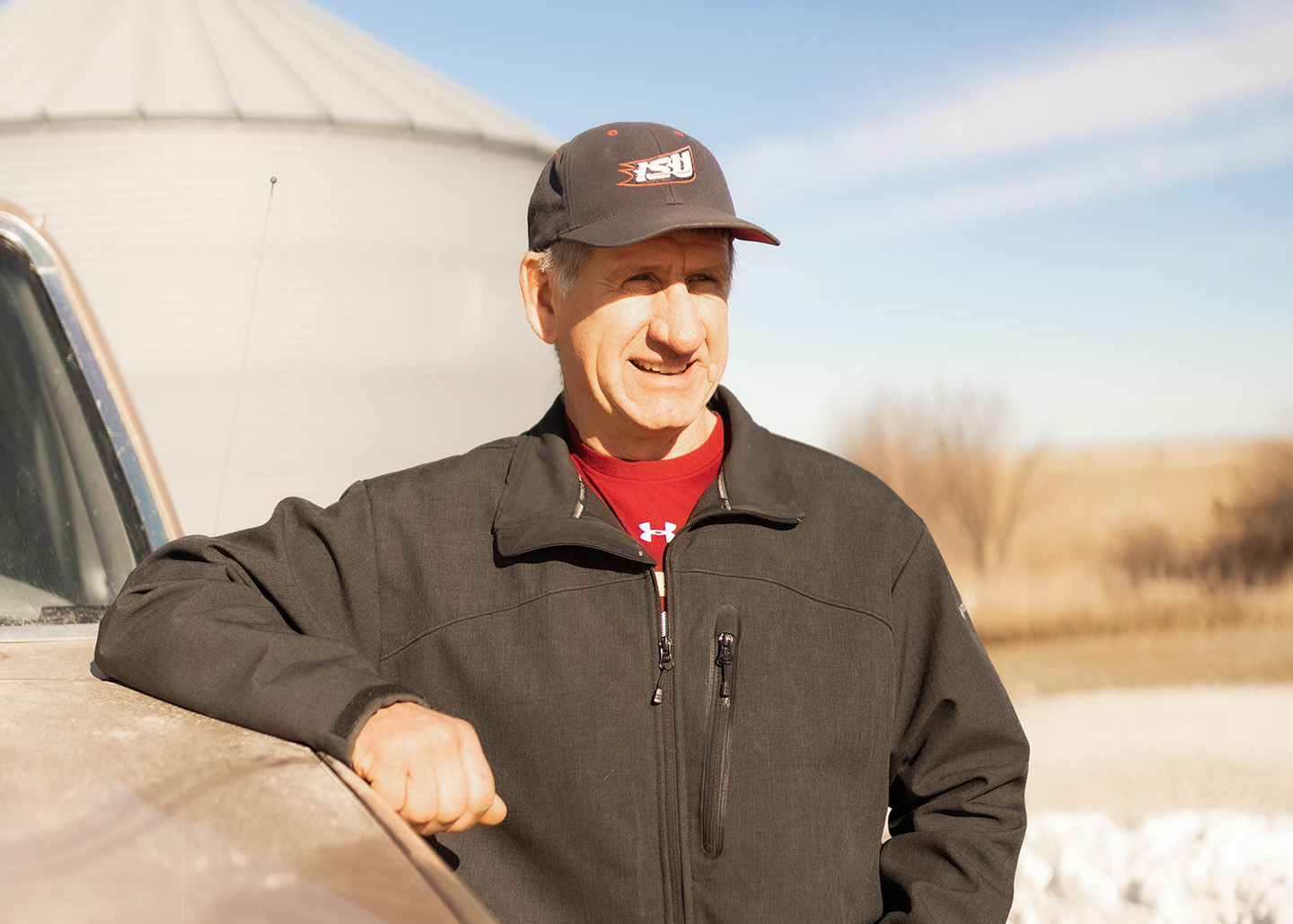
(Photo: Joclyn Bushman/Iowa Soybean Association)
Learn how to be involved in an RCFI trial
February 7, 2022
Farming isn’t easy — every piece of ground is unique, and each farmer makes a living in their own way. At the Iowa Soybean Association’s (ISA) Research Center for Farming Innovation (RCFI), the team works to further understand and share answers to farmers’ newest, burning questions.
What does RCFI’s research look like in the real world? RCFI’s on-farm research trials are known as replicated strip trials — field experiments conducted by farmers and research staff, often taking place over several years. This research is conducted with a farmer’s regular equipment and in differing soil types, yield environments, and even above and below terraces.
The focus of research can be just as broad from year to year. Typical replicated strip trial types include seeding rate, seed treatment, row spacing and in-furrow, studying things like manure usage in row crops, biological products and conservation at large — especially cover crops.
“A replicated strip trial is a product or practice placed side-by-side, replicating those four times across the field,” ISA field services program manager Drew Clemmensen says. “We typically look for two passes with the combine. These are typically 800 feet at a minimum but can also include complete quarter sections.”
The philosophy behind replicated field trials is to be unobtrusive to growers.
“It’s about what they want to know,” Clemmensen says. “Ultimately, our goal is to tell the truth of what the product does and whether these products or practices work in terms of a yield advantage.”
When a farmer volunteers to conduct a replicated strip trial with RCFI, members of the research team like Clemmensen, an agronomist, serve as the boots on the ground for farmers.
“Our role is to help walk through the process by implementing the trial, scouting, soil and tissue sampling, taking stand counts and whatever else is needed,” Clemmensen says.
ISA RCFI team members assist in a variety of ways to see the trial through. This ranges from helping find products for comparisons to designing and laying out trials where planter passes and sprayer passes might not line up with combine passes.
Research in the real world
Brent Bierbaum farms near Griswold and is a longtime RCFI participant. He has conducted trials examining cover crops, the reduction of nitrogen inputs, fungicides and tile management, to name a few. “I like that it’s the real-world situation out here,” Bierbaum says. “I appreciate working with the soybean association, and I’ve been happy with cover crop research.”
Bierbaum is looking forward to expanding his participation with RCFI, from trial strips to entire field comparisons.
With a trial established, the initial as applied file is taken from planters, sprayers, co-op spreaders or other equipment. After a trial concludes with harvest, farmers provide the RCFI team with the harvest data, typically from the combine. Once the data is compiled and the RCFI team studies the information and a report is generated for each grower.
After collecting the results of multiple trials, a larger, regional data set is created and hosted on ISA’s website (iasoybeans.com). Interested farmers can then do research of their own, examining the results of different practices, cropping systems, soil types and more.
“We’re encompassing the entire state with our files,” Clemmensen says. “We want to generate eight, 10, 12 of the same trials across the state so we get a composite look.”
The trial data doesn’t show bias toward practices or products, Clemmensen says.
“We’re not doing one-off type trials,” he says. “It’s relevant to all corn and soybean growers. We’re a nonbiased source. If it’s negative or positive, either way, that’s what we’re trying to show.”
The regional data sets are then passed along to ISA’s analytics team to help farmers better understand the data.
“It’s unbelievable what the analytics team can do to make it relevant, understandable and logical,” Clemmensen says.
The data is used in the interactive decision tools, available through ISA. Farmers can also add their farm data to make the tools better fit their farming situation.
With a greater level of participation, the information gained by RCFI’s replicated strip trials also grows. To learn more about participating in RCFI’s replicated strip trials, Clemmensen and Bierbaum encourage farmers to reach out to their field services program manager or the RCFI team.
“They’re game to try anything,” says Bierbaum.
Back